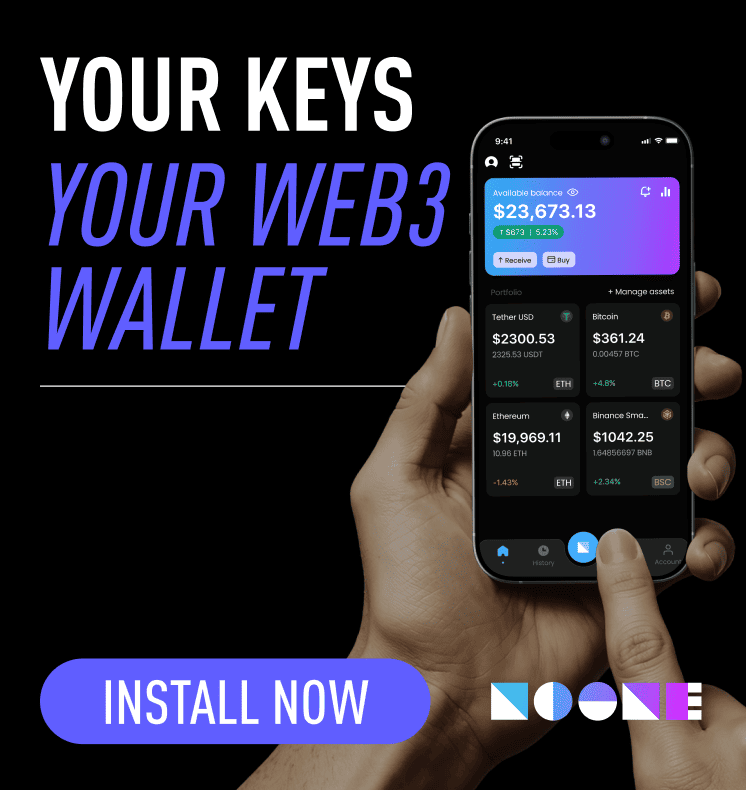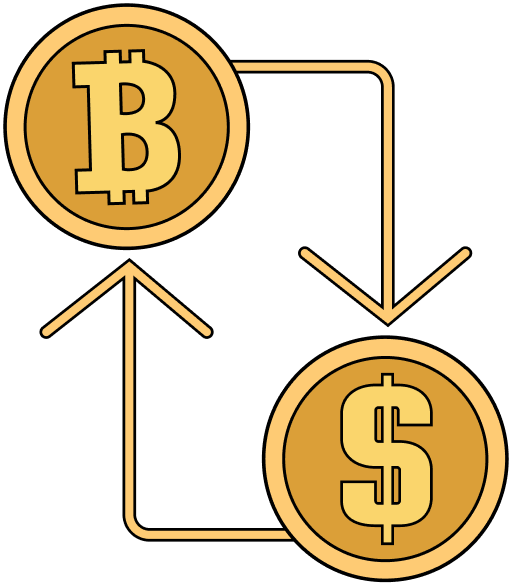Binance DEX is an open exchange built and launched by Binance, which is also among the world’s leading cryptocurrency firms. Unlike centralized exchanges, Binance DEX permits traders to exchange digital currencies from their very own wallets, without relinquishing possession of their respective private keys. Binance Chain-based, the exchange goes for quick, clear, and also secure peer-to-peer trading. Binance DEX is Binance’s attempt at developing an alternative trading facility for its centralized exchange while remaining loyal to decentralization principles.
What Is Binance DEX?
Binance DEX is an open exchange protocol running on Binance Chain, Binance’s bespoke blockchain designed solely for facilitating high-performance trading. It was launched in April 2019 to address rising demand for user-owned trading platforms that don’t involve any intermediaries.
The basic premise of Binance DEX is straightforward: the user needs to be able to trade tokens without leaving them on some sort of third-party exchange. On Binance DEX, users keep their money in personal wallets and deal directly with the exchange on the blockchain level. This configuration keeps counterparty risk low, since tokens are held securely on the user’s side until a trade is actually consummated.
While Binance DEX shares a brand name with Binance’s centralized exchange (CEX), it operates independently and has its own infrastructure, token standards, and interface. Binance DEX is more limited in scope than the CEX but offers a level of transparency and control that appeals to users focused on self-custody.
The Technology Behind Binance DEX
Binance DEX is facilitated by Binance Chain, which is an original blockchain designed for speed and throughput optimization. Binance Chain was created for trading’s primary use case, and its intention was to support high speeds and rapid block finality through its consensus method of Delegated Byzantine Fault Tolerance (dBFT).
The architecture of Binance Chain is intentionally simplified. It, like Ethereum or any other general-purpose chains, doesn’t incorporate Turing-complete smart contracts. It was a conscious decision to reduce network complexity and increase speed, providing Binance DEX with an ability to validate trades within seconds and accommodate an enormous number of transactions every second.
Binance DEX’s trading engine is integrated into the chain itself. Each order is itself a transaction on the blockchain, and each matching is done through validator nodes. This implies that the order book is completely on-chain, and hence users get real-time insight into trading activity.
The platform uses a native token standard called BEP-2. All tokens traded on Binance DEX must conform to this standard, and many popular cryptocurrencies have BEP-2 versions to support trading on the platform.
Wallets and Access Methods
To interact with Binance DEX, users need a wallet that supports Binance Chain and the BEP-2 token standard. Binance DEX does not hold user funds, so access depends entirely on the wallet in use.
Some common wallet options include:
-
Trust Wallet: Authorized mobile wallet that supports BEP-2.
-
Binance Chain Wallet: Browser extension for desktops created by Binance.
-
Ledger and Trezor: Hardware wallets that are Binance Chain compatible via integrations.
-
Math Wallet, Atomic Wallet, and others: Multi-chain wallets supporting Binance Chain.
After connecting a wallet, Binance DEX can be used through an internet-based user interface (https://www.binance.org), on which charts can be displayed, orders can be entered, and balances can be checked.
Because trading takes place on-chain, every action involves a blockchain transaction, such as placing or canceling an order. That means that users are charged gas costs in BNB (Binance Coin), Binance Chain’s native asset and the coin used to cover transaction fees.
Trading on Binance DEX
Binance DEX provides an easy-to-use trading experience compared to other decentralized exchanges. It boasts an intuitive design that includes a real-time order book, history of trades, and charts powered by TradingView. Every activity is linked to the blockchain, and there’s therefore complete transparency into market actions.
Trades are executed on limit orders, where clients specify their preferred price and quantity. Market orders are not offered, since these would need to be facilitated through smart contracts that Binance Chain lacks. This can cause trading on Binance DEX to be slower or less responsive than on central exchanges, particularly for low-liquidity pairs.
All trades are recorded on the blockchain at execution and appear on-chain as an established trade. Because all orders are on-chain, transparency is inherent to the system. Any trade or order can be examined via blockchain explorer, and there are no secret charges and no off-chain executions.
Fees are paid in BNB and are very low, usually decimal points of cents per transaction. There are no charges for setting up an account or for holding money due to all actions coming from wallet keys.
Token Listings and BEP-2 Standard
Binance DEX also accommodates BEP-2-compatible tokens, Binance Chain’s homegrown token format. Listing involves a more open and community-centric approach than on central exchanges. Projects can suggest listing of their token, pay a fee, and be subject to public review and voting on Binance Chain validators.
BEP-2 tokens represent a wide range of projects, including wrapped versions of major cryptocurrencies, community coins, and experimental blockchain assets. In some cases, tokens are issued directly on Binance Chain, while in others, they are pegged to assets on other chains.
The process of issuing a BEP-2 token is straightforward for developers and does not require coding smart contracts. This lowers the barrier for new projects and simplifies token management for users.
Yet, as Binance DEX does not accommodate intricate contracts, functionalities such as automation of liquidity pools, flash loans, or decentralized voting are missing. Projects seeking such functionality most often opt for running on Binance Smart Chain (now BNB Chain), which does accommodate smart contracts.
Security and Custody
One of Binance DEX’s greatest strengths is its non-custodial approach. The user at all times maintains possession over their money. There is no central user account database, no KYC procedure, and no risk of money getting frozen or stolen due to exchange-side hacks.
That said, the security of a user’s funds depends entirely on the security of their wallet and private keys. If a user loses their seed phrase or signs a malicious transaction, their funds are at risk. Binance DEX provides no recovery options for lost keys or stolen funds.
Since all transactions are authenticated through wallet-based signatures, phishing websites, malicious wallet extensions, or untrusted dApps must be used cautiously. Hardware wallets are also recommended for additional security, especially for holders who have significant holdings.
Limitations and Market Position
Although Binance DEX provides good privacy and control, it also lags behind newer DEX platforms in some ways:
-
No smart contracts: Restricts DeFi functionalities like lending, automated market making, and staking.
-
No market orders: Setting prices for trades manually, which can be slower when conditions are volatile.
-
Low liquidity: There are trading pairs which maintain low volume and hence can cause slippage or unfilled orders.
-
Limited user pool: Binance’s central platform remains more popular among most users because of its wider asset coverage and user-friendliness.
Despite these drawbacks, Binance DEX remains a useful tool for users who want a fully transparent, self-custodial trading environment. It also laid the groundwork for Binance’s later developments, including BNB Chain, which supports full smart contract capabilities.
Relationship to BNB Chain and Evolution
After rolling out Binance DEX and Binance Chain, Binance then launched Binance Smart Chain (BSC), renamed BNB Chain, to offer complete smart contract functionality. BNB Chain is capable of supporting Ethereum-compatible contracts and facilitating DeFi platforms such as PancakeSwap, Venus, and others.
BNB Chain basically replaced Binance DEX as the leading platform for decentralized applications. Binance DEX still exists and still plays its original role as a decentralized trading engine for BEP-2 tokens on Binance Chain.
More individuals have switched to BNB Chain due to its larger set of functionalities over time, but Binance DEX remains an original product and an operational demonstration of how decentralized trading can be done without the use of smart contracts.
Conclusion
Binance DEX is an on-chain decentralized exchange which provides users with full control over their assets and allows for quick and transparent Binance Chain token exchanges. While its functionality is restricted like newer DeFi platforms, its design prioritizes speed, privacy, and simplicity. For individual investors who want to circumvent custodian exchanges and keep full control over their holdings, Binance DEX offers a credible alternative. As the overall Binance ecosystem expands through BNB Chain and other efforts, Binance DEX remains an important piece of the project’s decentralized infrastructure.














 Twitter
Twitter
 Telegram
Telegram
